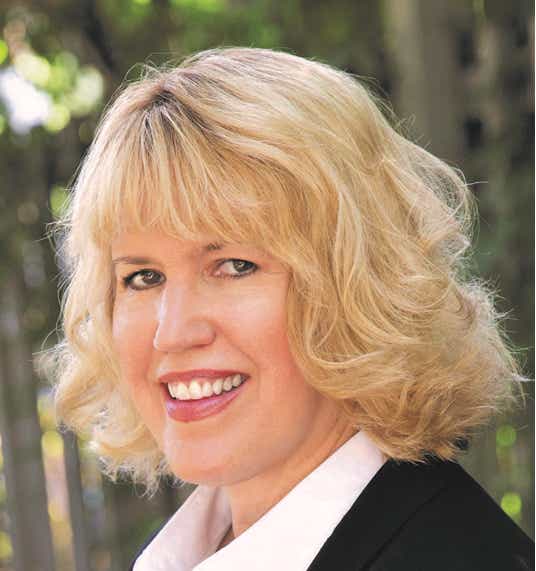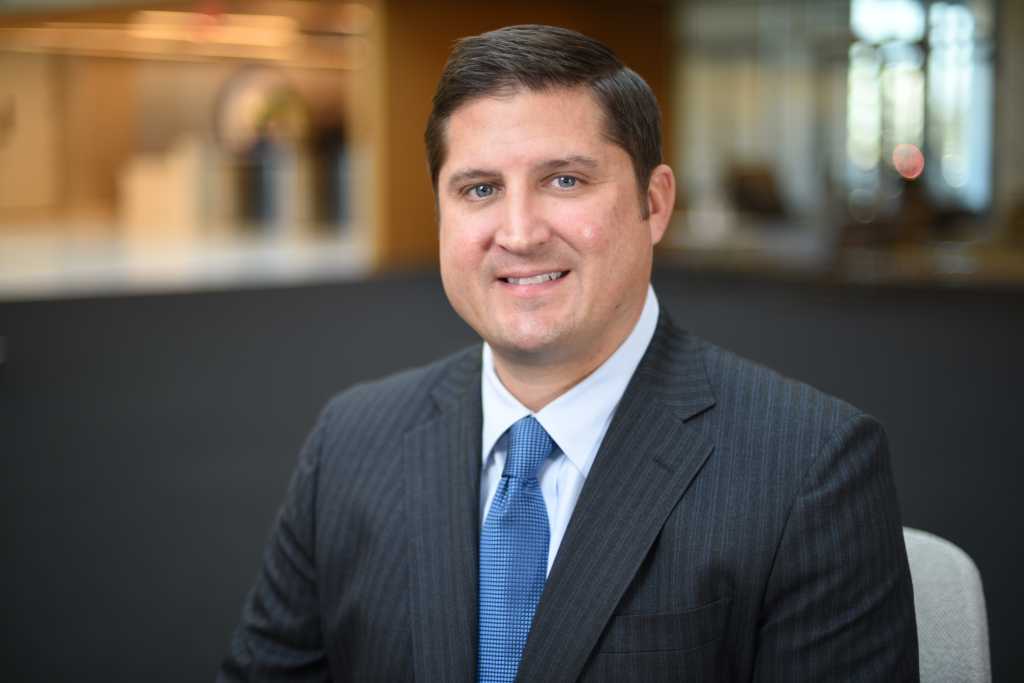A significant number of organizations are operating in a hybrid model — and expect to continue with that hybrid environment for the foreseeable future.
Global analytics and advice firm Gallup has found that the percentage of remote-capable workers working in a hybrid environment increased in 2022, moving from 42% in February to 49% in June. Gallup also found that only 20% of remote-capable employees were working fully on-site while 30% were fully remote in 2022. Furthermore, the firm had predicted that the number of hybrid workers would continue to increase, hitting 55% as we enter 2023.
Other reports confirm that hybrid work is here to stay. In its Future of Work predictions for 2023, IDC called hybrid work “a mainstay for our global future work landscape,” adding that “hybrid work will drive new technology solutions across functions and industries alike.”
Technologies cited by IDC include intelligent space and capacity planning tools, which the firm predicts 55% of global enterprises will use to reinvent office locations by 2024. IDC also predicts 65% of G2000 companies will consider online presence to be at parity to real life across their engaged workforce by 2025, with 30% of those same organizations adopting immersive metaverse conferencing tech by 2027.
While metaverse adoption is a ways off, CIOs are making significant investments in technologies aimed at improving the hybrid work experience. For example, Foundry’s 2022 State of the CIO survey shows that IT executives are investing in cybersecurity improvements and collaboration platforms better suited to their organizational needs as well as network reliability and performance improvements.
With competition for talent still tight and pressure on organizations to maximize employee productivity, Anthony Abbatiello, workforce transformation practice leader at professional services firm PwC, says CIOs should focus on what and how they can improve the hybrid experience for users.
He advises CIOs to partner with their counterparts in HR to identify the worker archetypes that exist in their organizations to understand how they work and what they need to succeed.
“CIOs should be asking how to create the right experience that each worker needs and what do they need to be productive in their job,” Abbatiello says. “Even if you’ve done that before, the requirements of people in a hybrid environment have changed.”
Hybrid workers today are looking for digital workplace experiences that are seamless as they move between home and office, Abbatiello says. This include technologies that enable them to replicate in cyberspace the personal connections and spontaneous collegiality that more easily happen in person, as they seeking experiences that are consistent regardless of where they’re working on any given day.
Here is a look at how some CIOs are bolstering their technology offerings to improve the hybrid working experience of their IT and business users.
Consistent, high-quality digital experiences
As senior vice president and CIO at Nutaninx, Wendy M. Pfeiffer says she’s seeking to do just that — deliver consistent, high-quality digital experiences that drive productivity and efficiency whether team members are working remotely, in the office, or a combination of the two.

Wendy Pfeiffer, CIO, Nutanix
Nutanix
“The solutions going forward required some innovative technology but also process updates; it’s a mix of those things,” Pfeiffer says, adding that fully remote workers, always on-premises employees, and those that alternate between remote and in-office each face unique challenges in a hybrid environment.
To ensure she and her IT team deliver the right tools for every worker type, Pfeiffer co-developed with other executives the company’s “Principles for Effective Hybrid Work.” She says these helped her, her colleagues, and IT better understand workplace dynamics and requirements so IT can best address them.
“These principles form the basis of our prioritization, our choice of technologies, and are reflected in our [objectives and key results],” Pfeiffer explains. “So now whenever we do something in IT, like release a capability, we have these principles in mind. And we say what we’re doing, the principle it’s related to, and here’s how we measure it.”
Those principles, along with lessons learned during recent years, have helped Pfeiffer sharpen her tech strategy for supporting hybrid work in 2023.
To start, Nutaninx IT has decided to go with applications that perform, act, and look the same whether being accessed in the office or from a remote location to eliminate any confusion or extra layers that workers might have to think through as they do their work. The same goes for any hardware (e.g., laptops) being used. This, Pfeiffer says, will also help minimize or even eliminate lost productivity from context-switching — the shifting from one task to another unrelated one.
As for new tools heading into 2023, Nutaninx IT is rolling out Lucidspark, a virtual whiteboard for real-time collaboration from anywhere. Pfeiffer says her team worked with Zoom, which her company uses, to add Lucidspark into that platform so Nutaninx employees can seamlessly access it even when in those virtual meetings.
IT is also launching a tool from Huddle that uses artificial intelligence for note-taking to support teams that are working asynchronously and need to share ideas and conversations. Pfeiffer says she expects this tool, which workers can also access through the company’s Zoom application, to bring more efficiency to information hand-offs — a critical advantage for employees who, thanks in part to virtual work capabilities, are now often working at different times.
Another addition will be 360-degree cameras and microphones from Owl Labs, which will be deployed in company conference rooms and integrated with Zoom to make those joining meetings remotely feel more like they’re in the room.
Pfeiffer says IT also has a big focus in 2023 on bringing in technologies that enable a consumer-like experience, as employees who have been working from home “are using consumer tech like mobile phones and comfy chairs and gaming computers, and consumer tech runs circles around traditional enterprise technology” in terms of experience. For example, IT is bringing in the Discord voice, video, and text chat app so that workers can have multiple synchronous conversations in parallel, from wherever they are, just as they would in an office environment.
“Everywhere we can, we’re taking lessons from the consumer experience and bringing that to the office,” Pfeiffer adds.
Refining the hybrid work experience
Michael Error, vice president of IT and CIO for Blue Cross Blue Shield of North Dakota, is likewise looking to advance his company’s hybrid work experience with the tech investments he’s making.
Michael Error, VP of IT and CIO, Blue Cross Blue Shield of North Dakota
Blue Cross Blue Shield of North Dakota
“Early on, it was good enough to get our employees home and that they stayed safe and they had the capabilities to get on [company systems],” he says. “Since that time, we have moved to ‘What’s the experience?’ That has meant regardless of where you are, do you feel like it’s all the same. And it’s not just having same from the technology whether you’re remote or not; it’s about making the people all feel they’re part of a team regardless of their location.”
He adds: “We’re trying to drive the same experience whether you’re in the office or remote and driving consistent, high-quality experiences.”
To do that, Error says he and his IT team have been educating employees about using and maximizing existing capabilities, whether its conference room cameras or the whiteboard features in Microsoft Teams.
Error is also rolling out new software-based phones that he says will provide a “less clunky” feel, more flexibility, and a more consistent experience as workers move between in-office and remote locations.
And IT is deploying a collaboration platform from Miro to better meet the needs expressed by hybrid teams, Error says.
Moreover, IT is working with the various business-side groups “to see what’s of interest to them, to evaluate products, and to see if those [products] could benefit the entire organization.”
Error adds: “In 2023, IT will be focused on refinement, what are the little things we don’t have today that will fill in the blanks.”
Turning to tech for seamless continuity
Abhijit Mazumder, CIO at Tata Consultancy Services (TCS), is similarly looking to how his IT team can improve the hybrid experience it has already enabled.

Abhijit Mazumder, CIO, Tata Consultancy Services
Tata Consultancy Services
“With things inching back to normalcy, our aim right now is to ensure that employees work with seamless continuity whether from home or the office,” he says, adding that TCS has been investing in technologies — including collaboration software and cloud-based applications — to support a hybrid workforce for more than five years.
“Basic amenities such as provision of huddle rooms linked to other TCS centers have made remote collaboration across the globe possible in a matter of minutes. We are continuously working to ensure a seamless transition to our employees and customers, independent of their physical location,” he adds.
For 2023, Mazumder says the focus will be on “tweaking, sustaining, and scaling our secure borderless workspaces [SBWS] solution and enabling additional capabilities in our offices to enable collaboration.”
He also plans to continue his investments in cloud collaboration, organizational resiliency and cybersecurity as well as the personnel to support all that.
“As a consulting and IT services organization, evolving technologies means scaling talent development. Though we have invested significantly in building a culture of agility within the organization, I think there is more to our journey. Our key focus would be scaling talent development in hybrid work model,” Mazumder adds.
The end-user device as office
Other CIOs are also focused on deploying technologies that can step up their company’s existing hybrid work environment.

Thomas Phelps, CIO, Laserfiche
Laserfiche
Thomas Phelps, CIO at Laserfiche, for example, says his company decided in early 2020 to create a tech stack that would support employees being independent from any specific workstation.
“My philosophy is your office is your laptop and everything you need to be productive is enabled through that laptop,” he says.
That strategy enabled the company to quickly pivot to remote work when the pandemic sent workers home that March and then hybrid as restrictions eased.
Still, he says there’s room for improvement. For example, existing digital platforms aren’t great at fostering ad hoc sessions and replicating spontaneous interactions — in other words, the proverbial “watercooler conversations,” Phelps says, noting, “It is still easier to have those when someone is physically present.”
Phelps is now searching for technologies that can help with that, and as part of that he’s deploying the Miro online whiteboard platform to support hybrid collaboration.
Phelps is also rolling out a new conference room videoconferencing system with zoom cameras, auto framing, streaming options, and other features to create a better, more equitable experience for remote attendees.
Similarly, Laserfiche is enabling captioning on Zoom, including captioning in multiple languages, to support equitable communication quality for all attendees. And he’s focused on ensuring whatever technologies IT deploys can be used on whatever devices workers want to use.
“Enabling work through different devices not just your typical laptop but also your mobile devices is going to be key, as is supporting work from anywhere through the right security architecture centered on zero-trust principles,” he says.
Upgrades and improvements

Ramon Richards, SVP and CIO, Fannie Mae
Fannie Mae
Today, as organizations enter their fourth year of providing remote and hybrid work to many or most of their workers, CIOs often speak about the need to bring continuous improvement — a longtime IT principle — to this space.
For example, Ramon Richards, senior vice president and CIO of Fannie Mae, where most employees can choose where to do their day-to-day work most of the time, talks about improving and enhancing the hybrid work environment.
His plans include evolving the organization’s conferencing capabilities “to create a more immersive experience using new camera solutions and virtual reality.” As Richard explains: “This will further enhance the overall employee experience to securely collaborate remotely and on-site with people both inside and outside the organization.”
He also plans to enhance existing IT support capabilities by adding modern end-user contact channels, such as crowdsourcing to troubleshoot common IT issues so that employees will have additional options to access and receive tech support.
And he is simplifying the organization’s device management capabilities by completing the migration to a common cloud-based intelligence-driven digital workspace platform for unified endpoints, virtual desktops, and mobile application management.
Morever, IT “is focusing on the end-user experience for all service deliveries in 2023, leveraging automation, when possible, to proactively detect and resolve device issues with self-healing capabilities and provide more effective self-service information,” he says. “Coupled with this effort is a cohesive change management process to ensure effective employee communication and adoption of new technologies.”

Bart Murphy, chief technology and information officer, OCLC
OCLC
Bart Murphy, chief technology and information officer of OCLC, a library technology and research organization, says he, too, is continuing to look at technology investments that can improve the hybrid work environment that his company adopted in April 2022 after working almost entirely remotely through the first two years of the pandemic.
“This includes continually upgrading WiFi access points, conference room technology, and meeting spaces for improved in-office connectivity and collaboration. We are in the process of moving to Teams for our phone system to provide more efficient ways to connect both internally with associates and externally with customers,” he says. “We continue to invest in our VPN capacity to ensure those working from home have all the access and performance they need to be productive.”
He adds: “We will continue to be intentional about creating events for all associates intended to experience and build on the strong culture that exists at OCLC and seek input from associates.”
Collaboration Software, Remote Work, Staff Management
Read More from This Article: CIOs sharpen tech strategies to support hybrid work
Source: News

